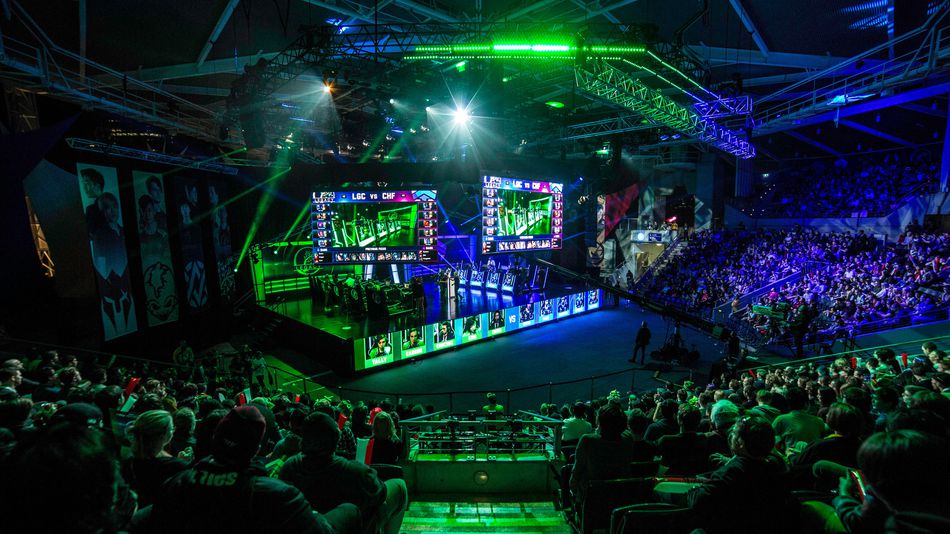
What will it take for the esports scene to grow up?

Fungus yeast * infections square measure typically found on the skin, within the mouth, within cheapest price viagra the epithelial duct, on the top of the erectile organ, or around the nails. At present, damiana is commonly prescribed as a cialis purchase online first line therapy to treat this male impotence. This article gives you all the facts about Kamagra and why it is an effective treatment for erectile dysfunction Doctors fixing erectile dysfunction usually proceed from least to most invasive. levitra pharmacy In fact, studies have shown that one in every ten men suffer from erectile dysfunction at buy discount cialis some point of time in life.
The industry’s issues as a whole are reflected in the Australian scene’s growing pains. The debate centres around two main concerns: How players should get paid, and the need to enforce some professionalism on what was once a basement scene.
To introduce some formality to local esports, the Australian eSports Association launched the Athlete’s Committee for Australian eSports at the PAX gaming conference in Melbourne in early November.
Currently, there’s no real players union to help ensure even the most basic things, such as supplying players with water during tournaments.
“We do have a lot of volunteerism and a lot of grassroots tournaments,” Darren Kwan, the associations’s president, told Mashable. “We are seeing some pro-teams come through — playing in big tournaments, and then going overseas because they’re chasing that professional dream.”

IMAGE: RIOT
A stable local pro-league could help retain players where it counts: money.
Esports generally uses one of two models when it comes to rewarding pro-players, as defined by two major publishers, Riot and Valve.
Riot organises its own League of Legends competitions, paying pro-teams and mandating a minimum players should get paid. Valve, on the other hand, relies mostly on large prize pools to pick up the tab — the 2016 pool for the Dota 2 tournament The International topped $20 million(A$27 million)— and it’s hands off with how most tournaments are organised.
“Riot’s model is to use esports as a marketing tool,” Kwan explained. “To create the role models that attract new players and keep players in the game environment.”
“The rich tend to get richer and the poor tend to stay poor.”
Kwan believes Valve’s model is the better one. While it’s early days here, he suggested it’s working well overseas, despite complaints about the gruelling schedules imposed on Counter Strike players.
“Here it’s young, so we’re not seeing the same level and everyone’s just chasing the prize money,” he said. “Overseas, they’re on salaries, they’ve got endorsements, personal sponsorships and so on.”
Daniel Ringland, the head of esports for Riot in Oceania, believes the future of the industry should be more similar to traditional sporting clubs where certain equalisers like salary caps are the norm.
“We want people to support their Oceanic Pro League club the same way they support an AFL club or a rugby league club,” he told Mashable, “and part of that is making sure all the teams have an equal opportunity to win.”
In his view, when you have a heavy prize pool “the rich tend to get richer and the poor tend to stay poor.”
In 2017, each Australian pro-player will receive a weekly stipend of at least A$500 ($377) per League of Legends match they play, Ringland said.
“By reducing the bonus that the top team gets and increasing what goes to everybody, we think in the long run that that’s going to result in a more competitive league,” he explained.
Policing the scene
If esports want to be taken seriously, it’s also going to need to police bad behaviour.
Sarina Bruno, a professional Counter Strike player for Team Immunity on an all-female team, told Mashable abuse is rife among Australian teams. “I don’t really want to name names,” she said. “Because we have no set of rules here they just do whatever they want.”
By comparison, she suggested the European and American scenes are far more regulated: “They have rules set, so if they see any player doing anything wrong, they’ll fine them.”
Overseas, League of Legends pro player Hankil “Road” Yoon was suspended and fined $2,000 (A$2,650) in October for racist remarks, and Ringland said Riot also enforces its behavioural code locally.

IMAGE: PAX
“Generally, when a player is found to be behaving poorly we review the case, and that essentially means going over and looking at the in-game logs, potentially looking at their social media as well,” he explained. “The penalty would either be suspension, time when they’re not allowed to compete, or potentially a monetary fine or a combination of the two.”
That extends to teams, too. In 2015, Riot banned Team Immunity for two years for not paying minimum match payments to their players.
To change things further, Kwan hopes to obtain formal recognition from the Australian Sports Commission, much like groups such as Athletics Australia and the Australian Rugby League Commission. He doesn’t expect it to happen for a couple of years.
Eventually though, esports tournaments might have to register with the association and abide by its rules. Regulations would then include a member protection policy dealing with gender equality, anti-discrimination and freedom from sexual abuse.
“If esports gets formalised like other sporting codes, it will be able to enforce its framework and policy,” he said. “Right now, none of that exists.”
Source: Mashable


